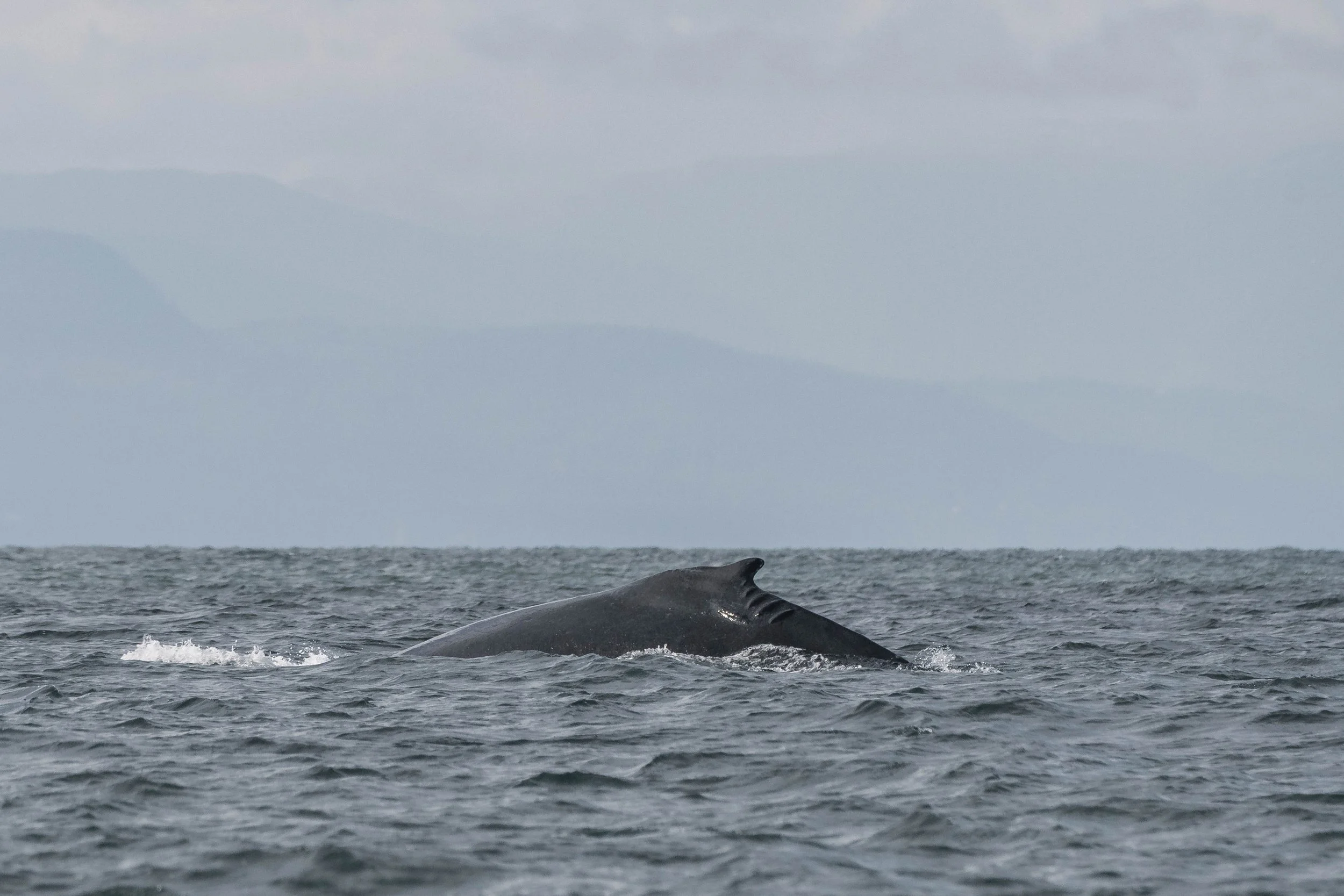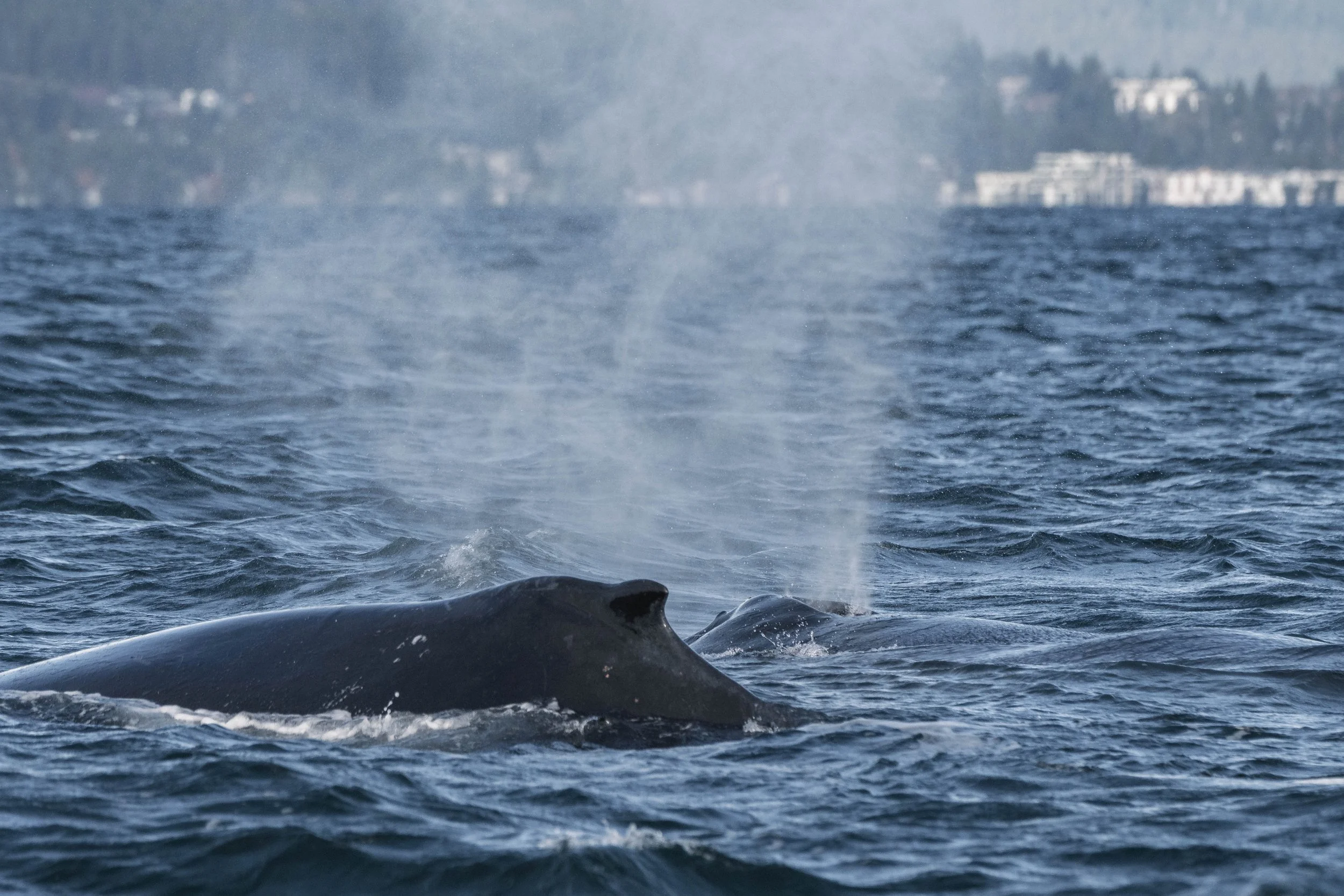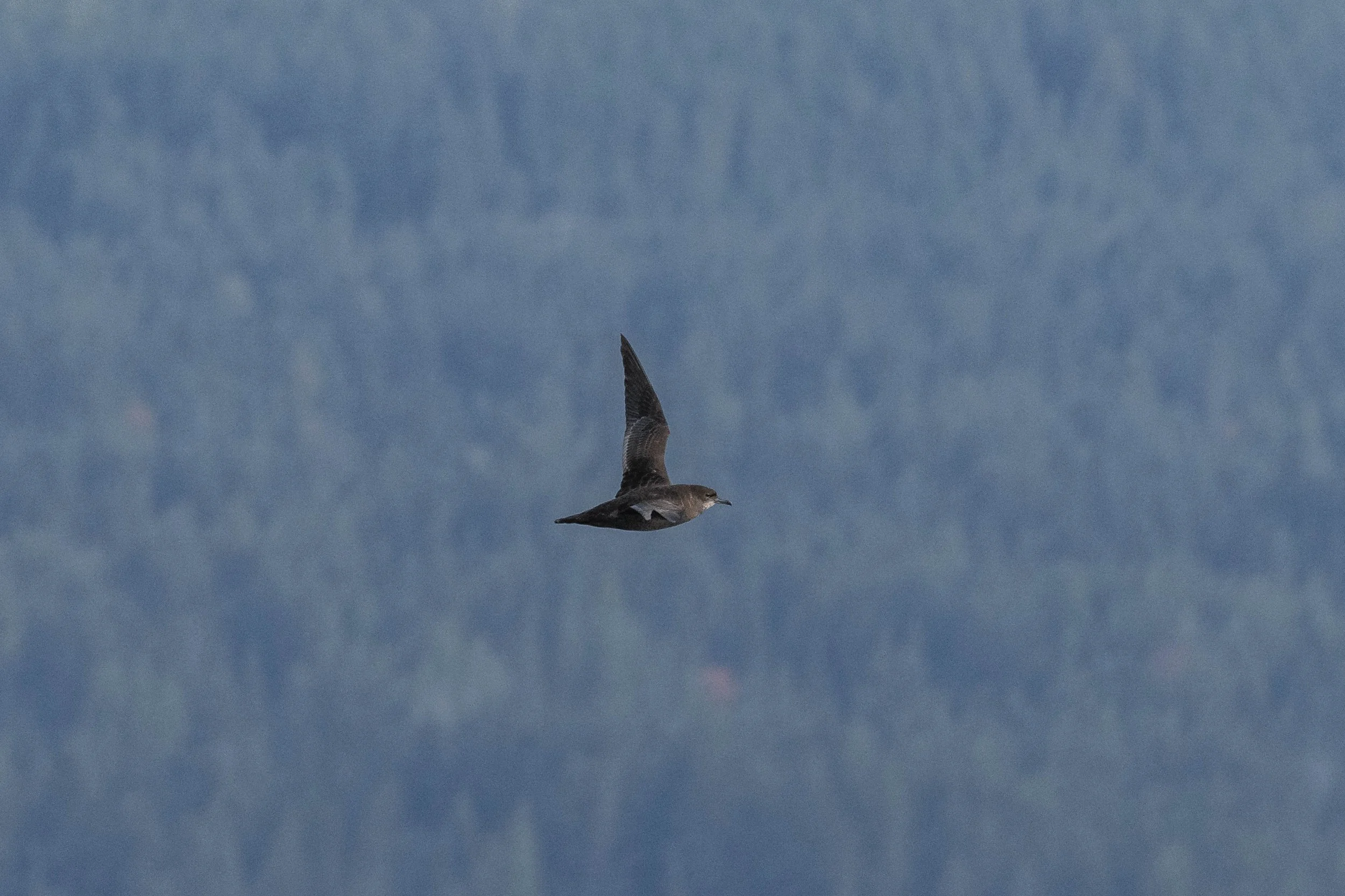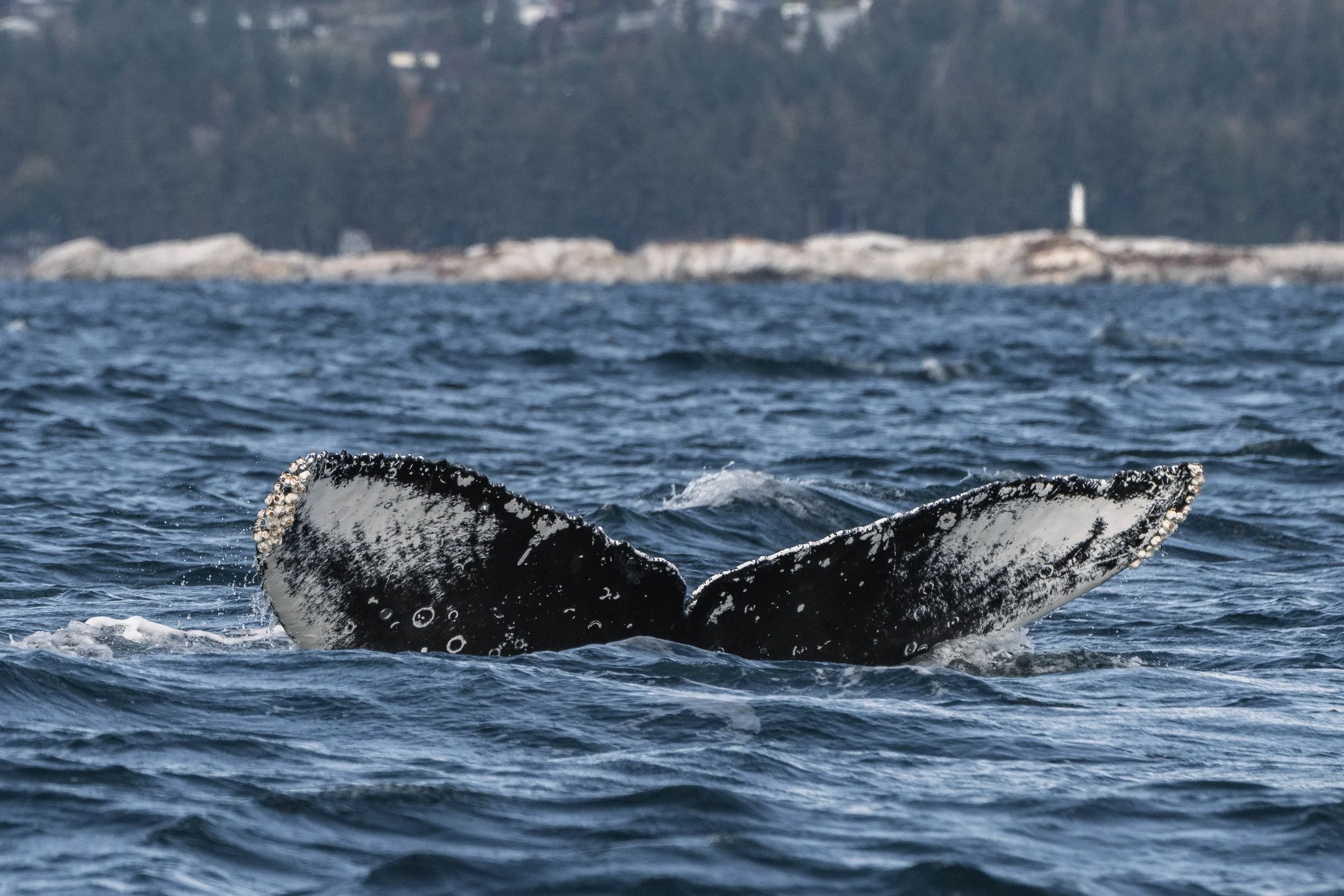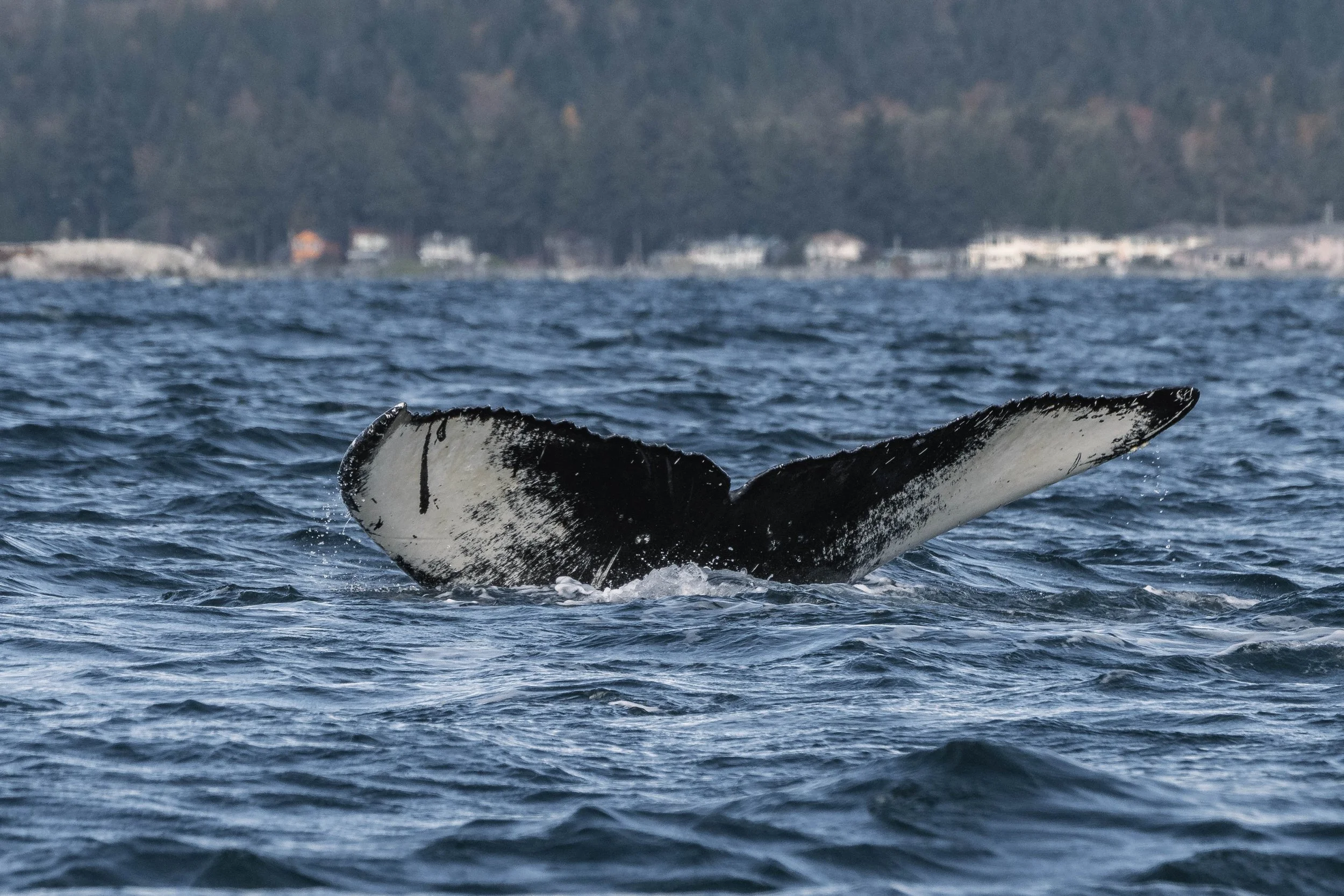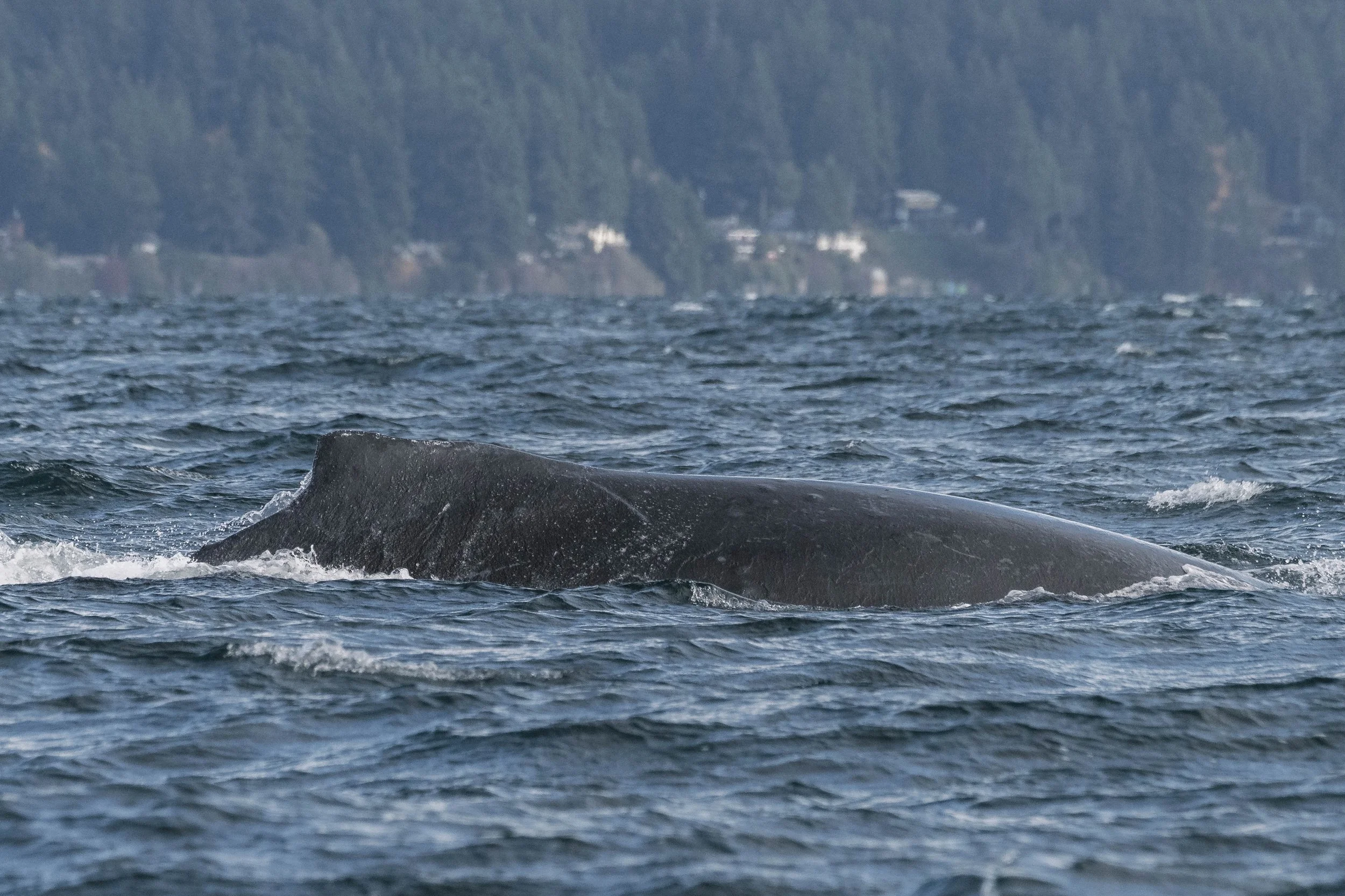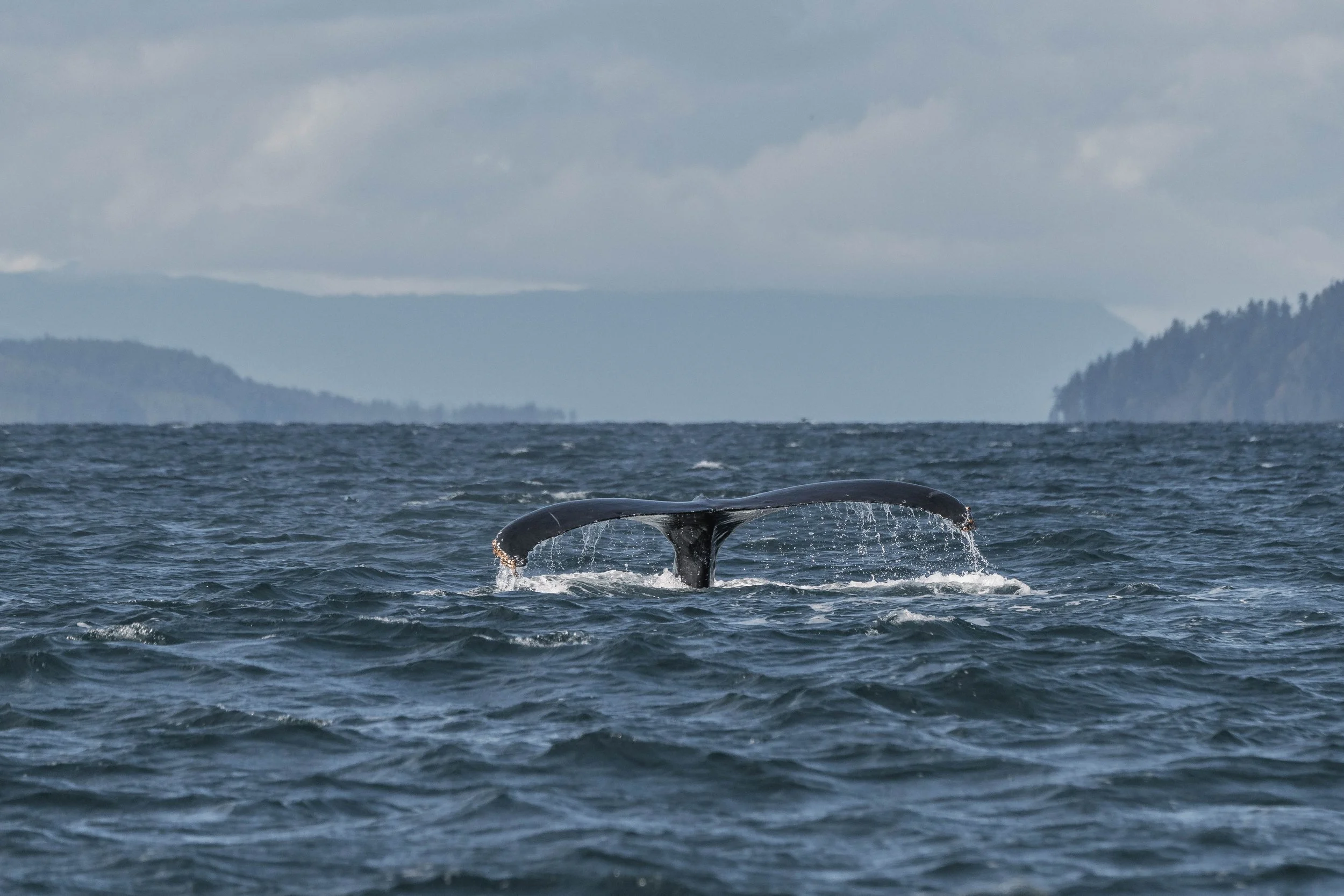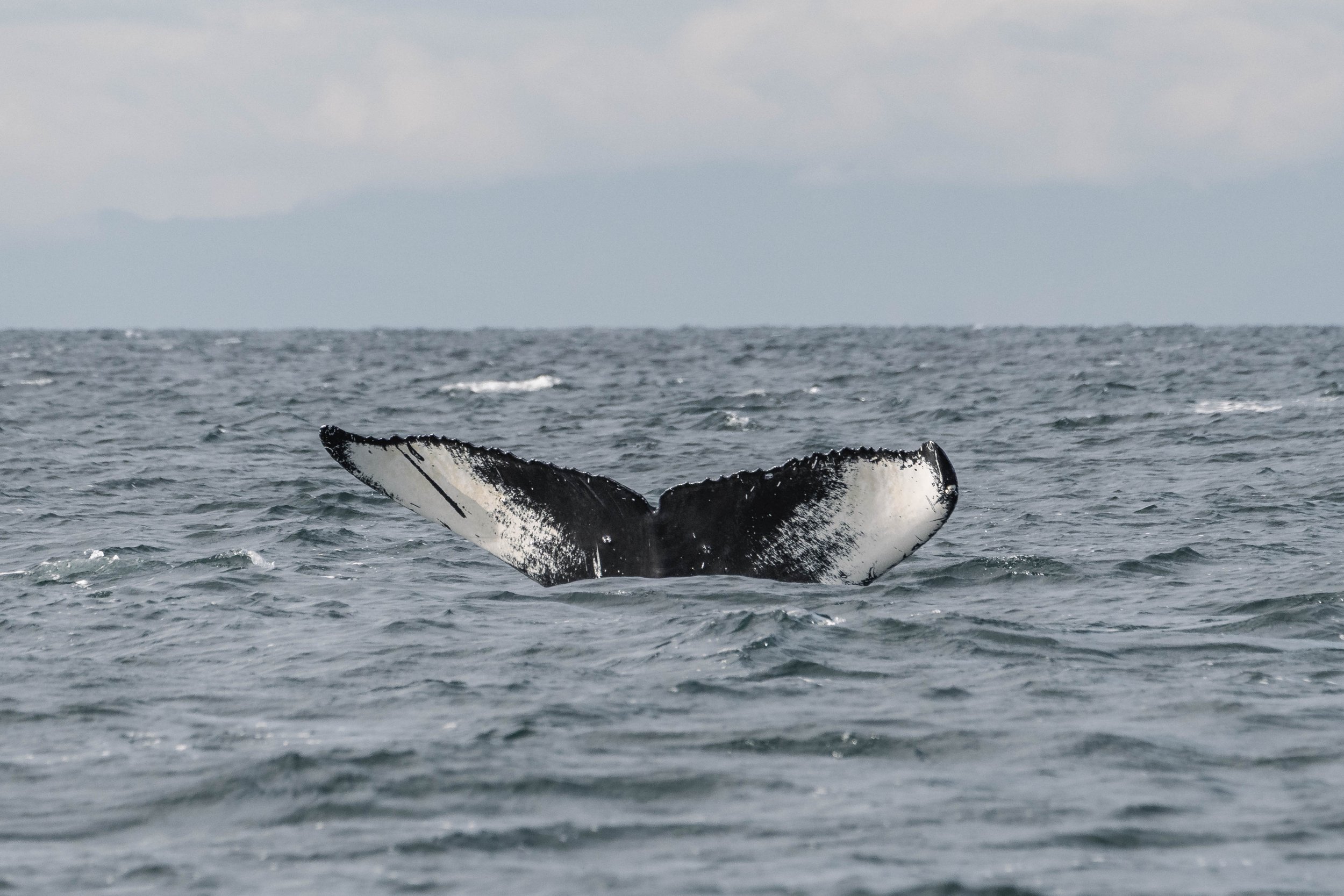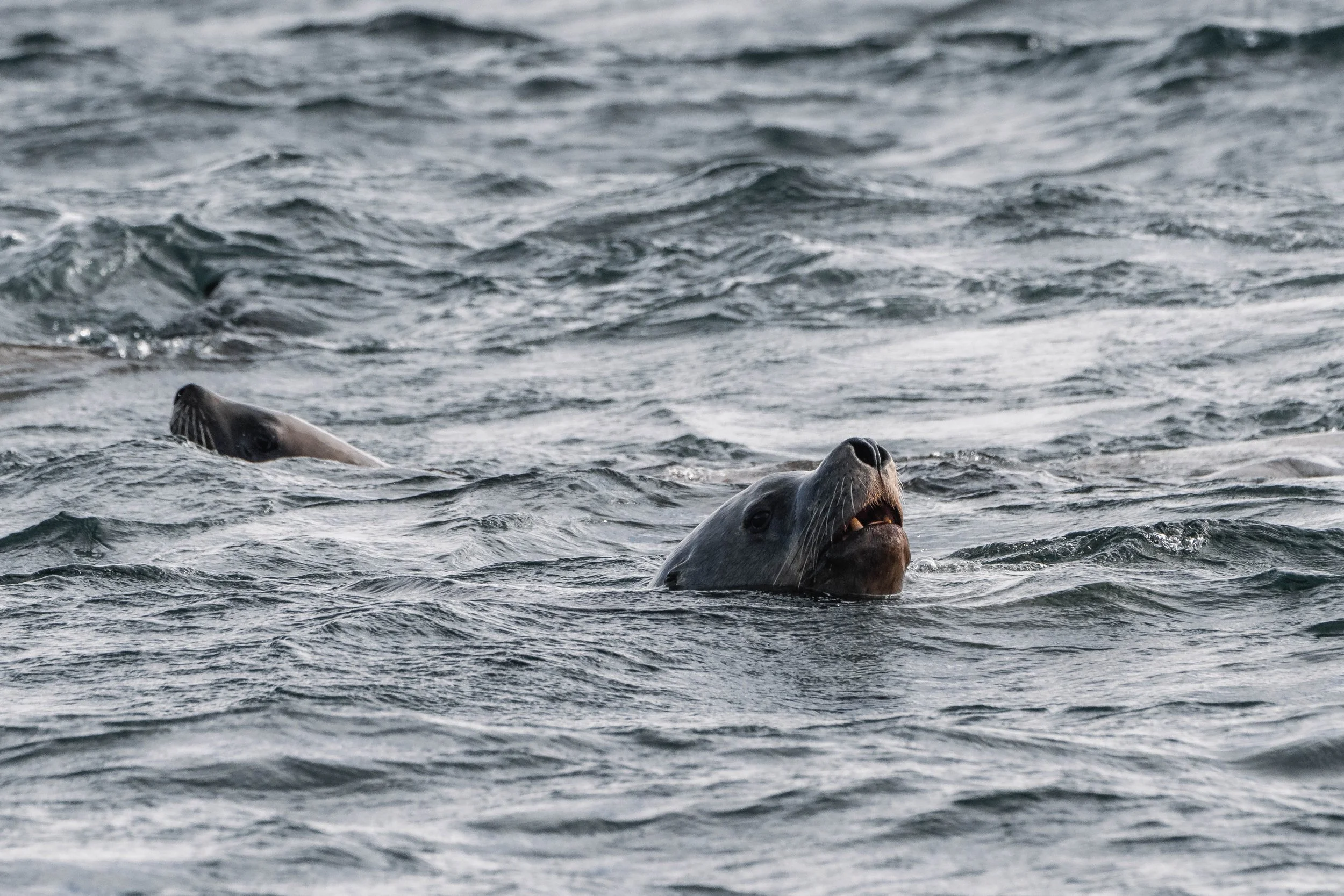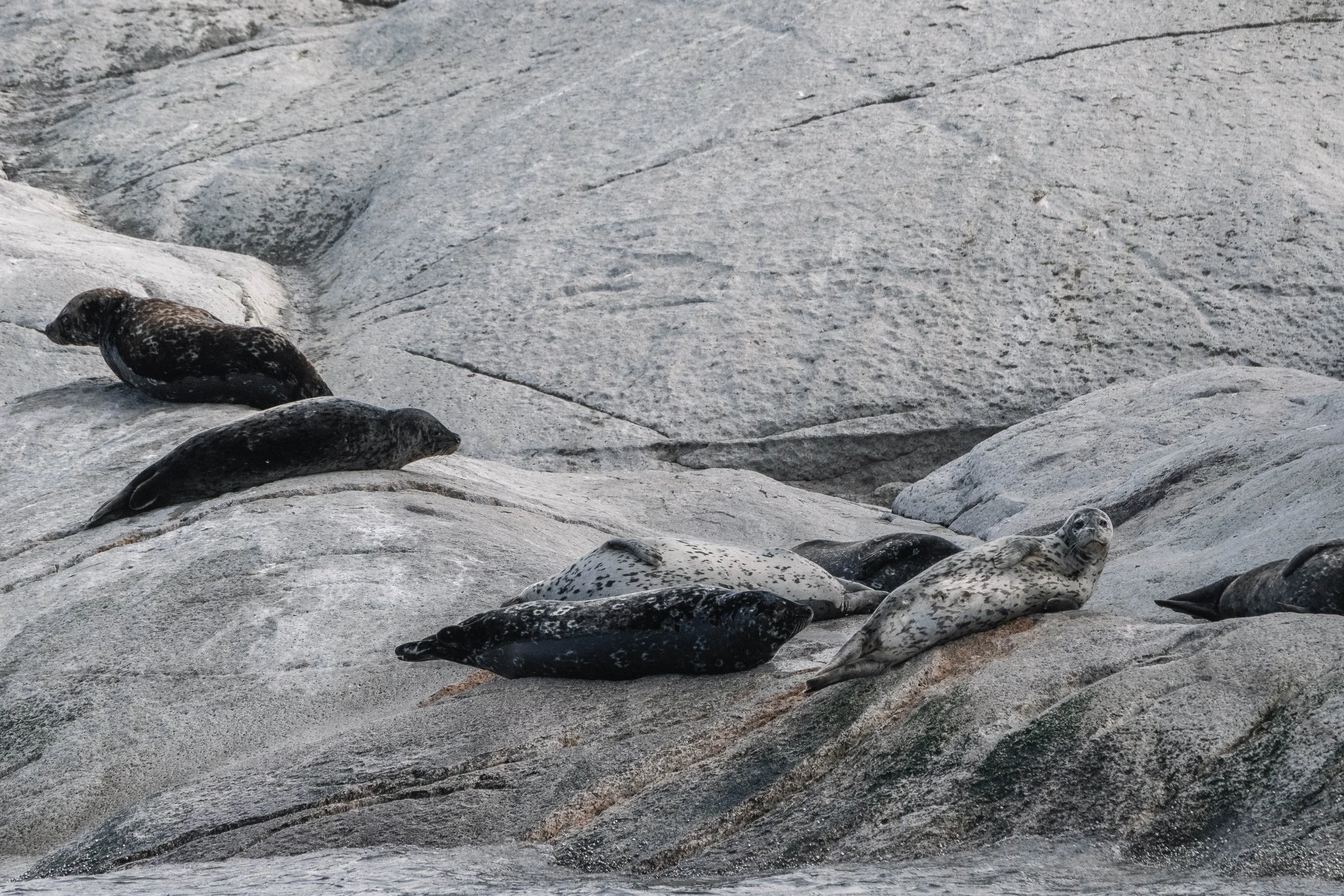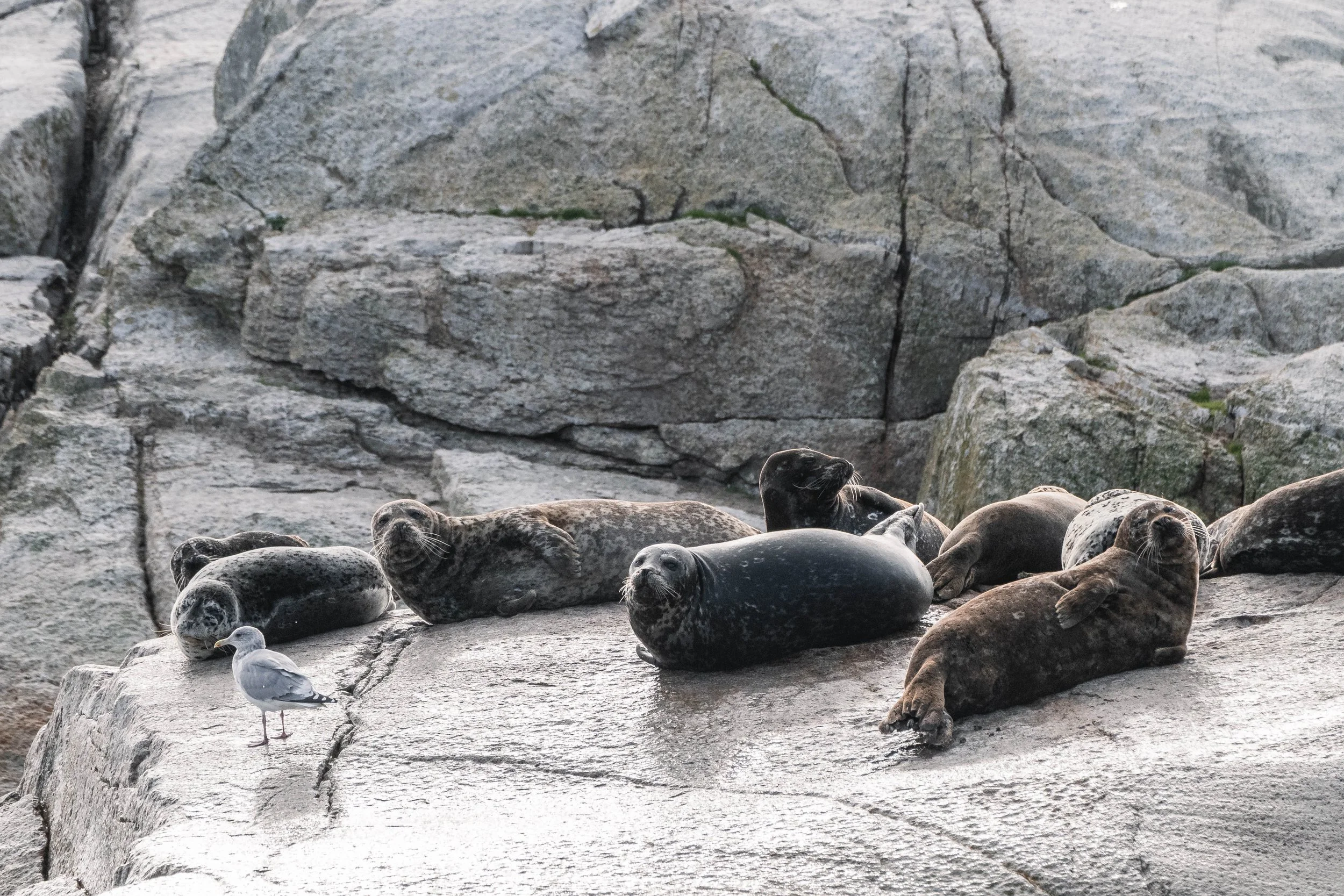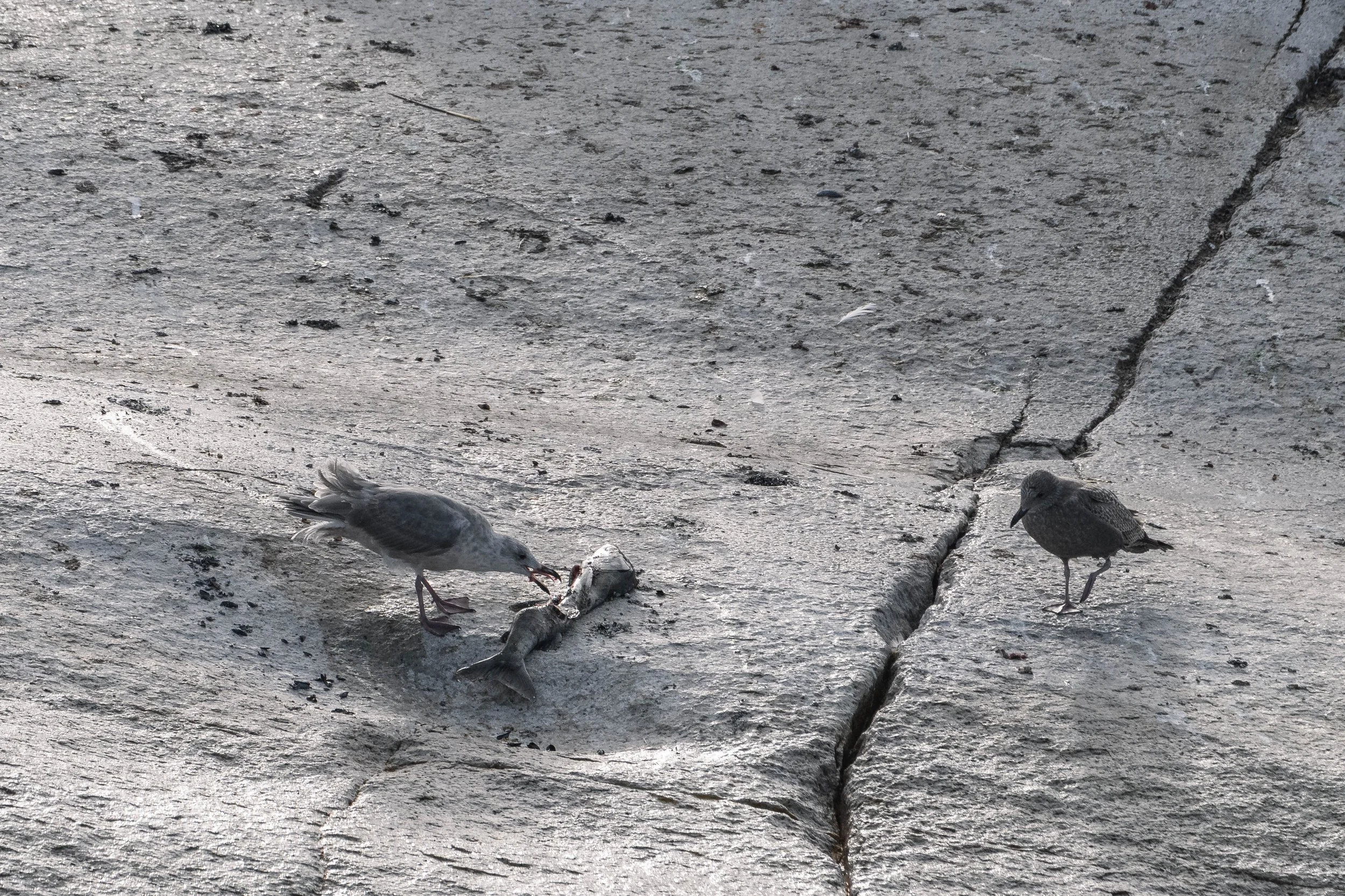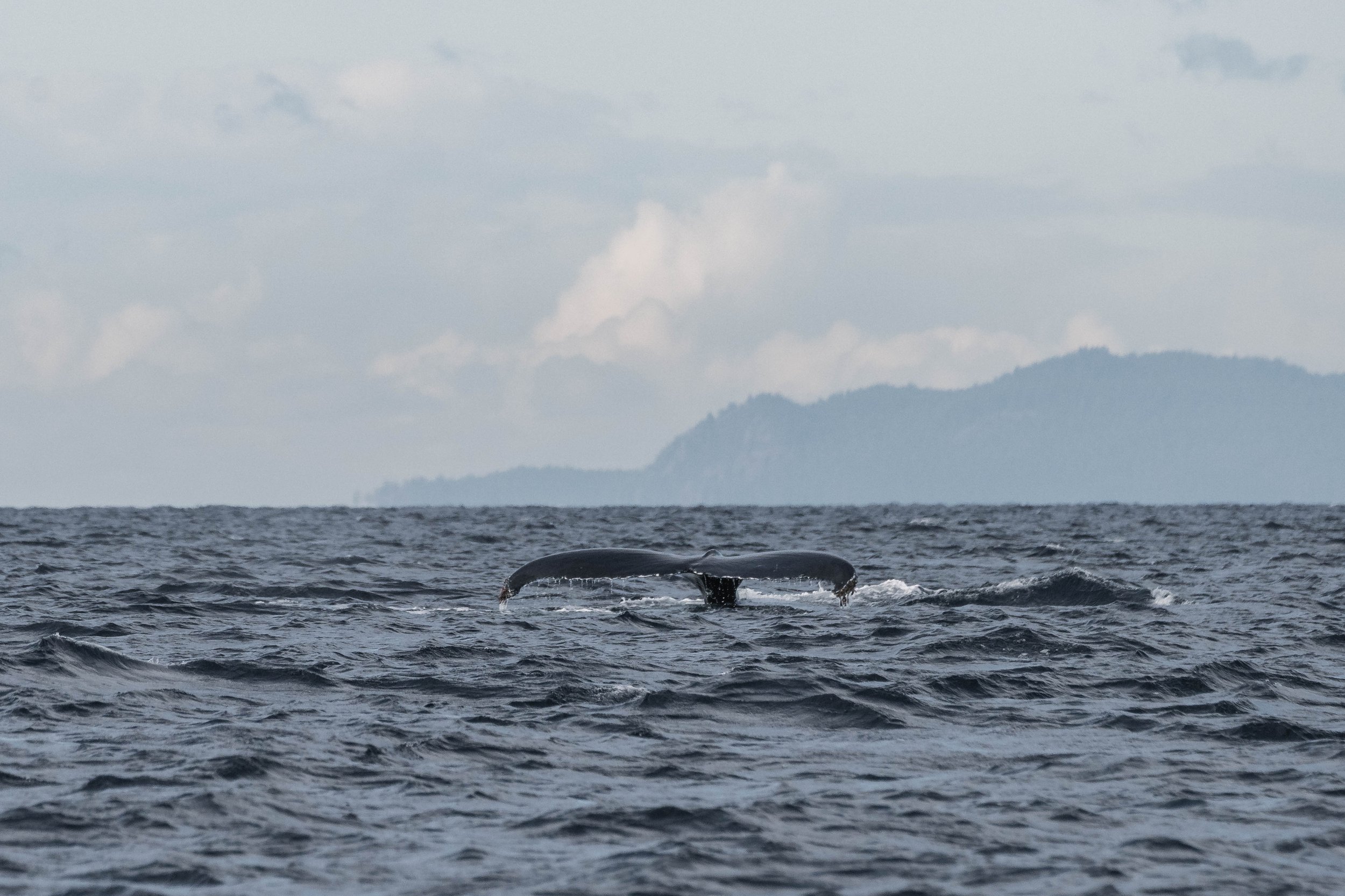October 27, 2025 - It was a day filled with humpbacks!
Today started with our semi-covered boat off the dock, getting stopped on its way out of the Nanaimo Harbour by some sea lions! The Nanaimo Harbour is closely connected to the Nanaimo River Estuary zone, with some suggesting they are essentially one and the same. The river is a significant salmon spawning ground, with fish returning year after year to travel upstream and reproduce. Spawning occurs when they reach the smaller streams and tributaries, as salmon require gravel to lay their eggs. At the mouth of the river, the salmon wait for rain, allowing the rivers to swell and accommodate the masses of fish. Predators will take advantage of the salmon waiting at the estuary, catching the salmon and eating them at the surface.
After getting pleasantly interrupted on their way out, they headed into the open waters of the Strait of Georgia. After a few minutes of travelling in the waves, they spotted some telltale signs of whales: blows in the distance. As they looked closer, they could also see dorsal fins visible in the distance. After a minute with the whales, they were able to identify them as members of the Critically Endangered Southern Resident Killer Whale population and immediately left them to their travels. Not only is it now part of Canadian Whale Watching Regulation to not watch this population of whales, but it was a practice we had before these regulations came into place. The Resident Orcas are fish eaters and therefore rely more on communication and echolocation to hunt successfully; the presence of boats can interrupt this process. Although boat noise isn’t the only thing leading to this population being in decline, it’s one we have some control over, so that’s why we only focus on the healthy, growing populations of whales in British Columbia.
As we left these whales behind, we continued searching, and soon came across a humpback whale. Luckily, all the humpbacks in our waters are part of an increasing population, so we stayed and watched! This first whale was identified as Mammoth/Ocean (BCX1710). As we watched her, she was travelling in a big circle, likely following the food in the area. The humpbacks are here to feed over the summer, into the fall. Our waters are rich in nutrients, providing an abundance of food for the whales in the form of krill and small schooling fish. The humpbacks will consume a massive amount of these animals over their time here, putting on weight in the form of blubber. This fat reserve stores energy for the whales to use as they migrate south, to either Hawaii or Mexico. Down there, there aren’t as many available nutrients, leading to a lack of food for the whales. Their energy comes almost entirely from burning through the fat that they’ve built up over the summer months here. After leaving Mammoth to feast, we were not surprised to spot more blows fairly close by, just south of the White Islets.
We watched as the blows rose into the air and began to multiply. This time, we had three humpbacks! Identification took a little longer this time around. We had Hammer (BCY1222), Magpie (BCY1124) and a friend whom we did not recognize fluking among the waves. We spent time with this trio as they peacefully dove one after the other, more than likely partaking in a meal together.
The White Islets are always alive with wildlife, so we had to meet the source of the noise nearby. It was none other than our Steller Sea Lions, a favourite among staff and guests. These massive pinnipeds can weigh over 2,500 pounds and, in turn, need to consume up to 50 pounds of food per day! We also got to meet their smaller, quieter cousins, the harbour seals. These little pinnipeds can weigh up to 300 pounds, but typically average around 150 pounds. They will need to eat around 5 pounds of food per day to maintain their plump figures and continue looking adorable as ever on the rocks! We also watched some gulls sharing a meal, a rich spread of dead fish. They are our cleanup crew, along with the vultures, constantly maintaining the shoreline and searching for rotting carrion. With that, our bow pointed back across the Strait, and we were heading home.
As we approched Entrance Island near home, another blow rose against the horizon. We made a quick stop to get an ID. It was Prowler (BCX1660), a familiar fluke, which was a good thing, as they were elusive on this day. We saw one surface, then a tail raise above the water, and Prowler had slipped below the surface once again. With a wave goodbye to Prowler as they continued on their travels, we did the same, and soon were snugly tied at the dock with smiles on our faces after a wonderful experience in the Salish Sea!
Enjoy the photos below taken by Marine Naturalist Val Watson.
Mammoth surfacing in the waves.
Mammoth lifting her tail to dive.
You can see the very distinct propeller scarring on Mammoth’s left side here.
The unknown on the left, with Magpie exhaling next to them.
A Shearwater flying overhead while we watched the trio of humpbacks.
The underside of the unknown’s tail.
The underside of Magpie’s tail as they dive.
Hammer lifting his tail to dive.
The very white underside of Hammer’s tail.
Hammer’s dosal fin as he surfaces.
The unknown’s dorsal fin.
Magpie’s dorsal fin.
Hammer going for a dive.
The unknown creating a fluke waterfall as they dive.
The underside of Hammer’s tail as he dives.
A Steller Sea Lion striking a pose on the White Islets.
A large male Steller Sea Lion lounging on the rocks.
Steller Sea Lions watching us from the water.
Harbour Seals spending time on the rocks at White Islets.
A Steller Sea Lion watching us as we float by the White Islets.
A bunch of rock sausages on the rocks enjoying the sunshine.
A couple of gulls sharing a fishy meal.
Prowler as he surfaces in the waves.
Prowler lifting his tail to dive.



